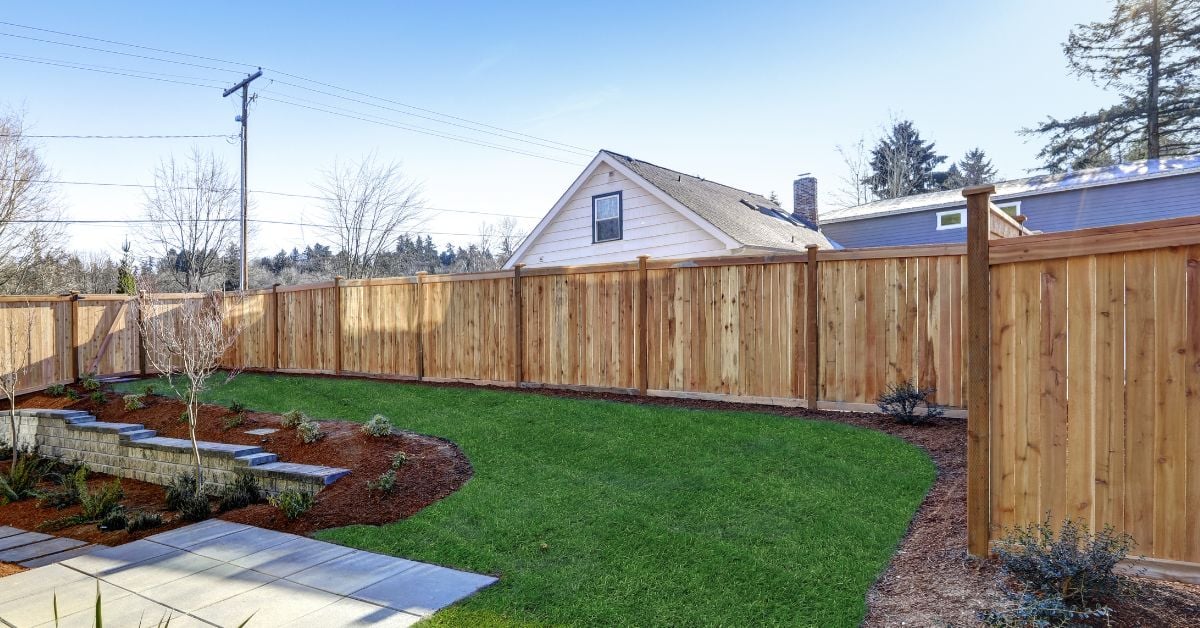When you're looking at building a backyard fence, one of the first questions that will come up is whether to go with a complete or partial fence — especially if you have a large yard or a tight budget. Complete and partial fences both have benefits for your yard and home, but there are also some drawbacks to each. Let’s look at both in this ultimate guide:
What is a Complete Yard Fence?
A complete backyard fence is a fence that surrounds the entire perimeter of your yard, no matter the fence material. The height of a complete backyard fence can also vary, and it will depend on what type of material you choose to use.
A complete fence doesn’t necessarily have to be a privacy fence. A decorative aluminum fence around the perimeter of a stately historic home is still a complete fence, for example.
Learn more about privacy fences.
Benefits of a Complete Yard Fence
Complete backyard fences are great for a variety of situations, including safety and privacy. While not all complete fences are privacy fences, if privacy is a goal for your fence, then a complete privacy fence may be the best choice for you. Solid, tall slats or panels keep out the eyes of passersby.
Complete fences are also good for pet owners. Maximize the square footage of the yard for your dog to run with a complete fence — just make sure the fence is the right style to stop jumping or digging around it.
This principle also applies to families, especially with young children. A complete fence gives your kids or grandkids the most space to play and explore, but it will keep them from wandering off of your property. A fence can also keep young kids from wandering into the street, the woods, a nearby pool or pond, or other potential dangers.
We usually talk about fences keeping things in, but a fence also keeps out more than the eyes of your neighbors. In a remote area, a complete fence may help keep wildlife out of your yard. If you’re in a busy area or near a bus stop, for example, a complete fence may keep trespassers from cutting through your yard.
Drawbacks of Complete Yard Fence
Complete fences aren’t right for everyone and every situation. In fact, a complete fence can get quite expensive for the materials and labor required to install the fence. Cost is probably the most important drawback of a complete fence, but there are ways to make a fence project more affordable.
A complete fence, especially if it’s a privacy fence, may create tension if your closest neighbors as well. If you’re planning to install a fence, make sure you bring it up to your neighbors, so it’s not a shock when the installers arrive.
A fence around the full perimeter of your property may not be allowed by your HOA or municipality. Make sure you have the proper permits and documentation if you’re planning to install a complete perimeter fence, especially when it comes to property lines.
What is a Partial Yard Fence?
A partial yard fence, also known as a half-yard fence, is a type of fence installed in part of the yard but not all the way around the property’s perimeter. Partial yard fences can be installed in the front or backyard only or on one or both sides of your property.
A partial yard fence can provide privacy and security without completely closing your property off from the rest of the neighborhood.
Benefits of a Partial Backyard Fence
A partial yard fence can provide some of the benefits of a complete fence, such as a safe place for your kids and pets to play, but in less space than the complete fence would provide.
Partial fences are great if you only want to secure a certain area of your yard, like a pool. In fact, if you have a pool, especially if it is inground, you may be required by your municipality or HOA to have a fence around the pool. If you have a vegetable garden and are worried about deer or other wildlife getting to your precious veggies, a partial fence can help keep them out.
Partial fences also cost less than a complete fence since it requires fewer materials and less time to build.
Drawbacks of a Partial Fence
Partial fences give you more flexibility with your property and can protect what you need to project without closing off your entire property. But they’re not the right choice for every situation. If you have a dog that likes to run, like a greyhound, a partial fence can cut off the space needed to stretch their legs.
Partial fences can also look odd or not aesthetically pleasing for every homeowner because they’re an awkward shape or cut through part of the yard. Partial fences may not be allowed by your HOA for these reasons. Always consult your HOA bylaws before making any big changes to the exterior of your home.
If a fence is in your future, but you’re unsure if a complete or partial fence is the right choice, a consultation with a fence installer can be helpful. These pros can talk through your needs, budget, and concerns, and help recommend the best options based on your yard. Check out our cost guide for more tips on planning and budgeting your fencing project.



